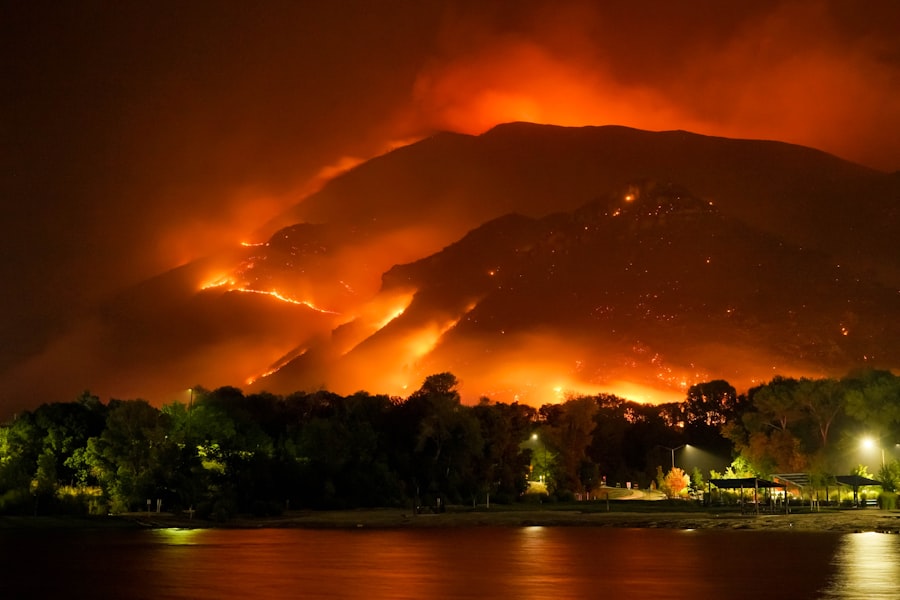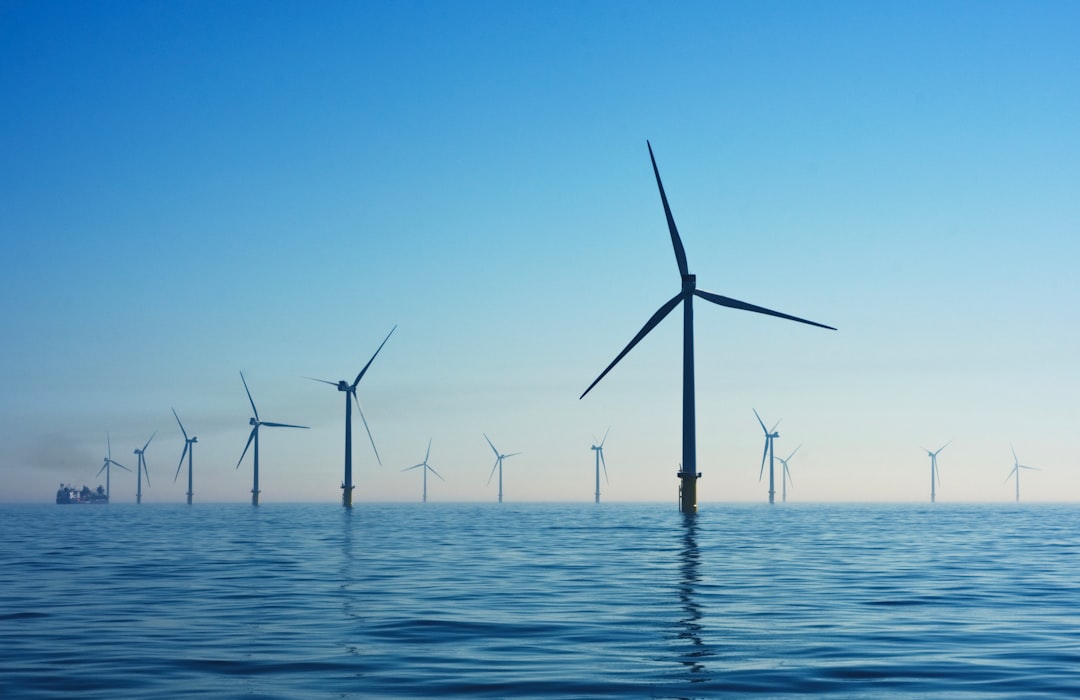Climate change has emerged as one of the most pressing global challenges of the 21st century, with far-reaching implications for various sectors, including national security. The United States, with its vast and diverse geography, faces unique challenges as it grapples with the effects of climate change on its defense strategies. The interplay between climate change and defense geography is complex, as rising temperatures, shifting weather patterns, and increasing natural disasters threaten military readiness and operational capabilities.
As the U.S. military seeks to adapt to these changes, understanding the geographical implications becomes essential for maintaining national security. The U.S.
Department of Defense (DoD) recognizes that climate change is not merely an environmental issue but a multifaceted threat that can exacerbate existing vulnerabilities and create new challenges. From coastal military installations to Arctic operations, the geographical landscape of the United States is intricately linked to its defense posture. As climate change continues to reshape the environment, the military must reassess its strategies, infrastructure, and resource allocation to ensure that it remains prepared for a rapidly evolving security landscape.
Key Takeaways
- Climate change poses a significant threat to US defense geography, impacting military bases and operations.
- Rising sea levels are a major concern for coastal military bases, leading to potential infrastructure damage and operational limitations.
- Extreme weather events, intensified by climate change, can disrupt military operations and readiness.
- Climate change is reshaping the Arctic, presenting new challenges and opportunities for defense strategy in the region.
- Military infrastructure is vulnerable to climate change impacts, requiring adaptation and resilience measures.
Rising Sea Levels and Coastal Military Bases
One of the most immediate threats posed by climate change is the rise in sea levels, which has significant implications for coastal military bases across the United States. Many of these installations are situated in low-lying areas that are increasingly susceptible to flooding and erosion. For instance, bases such as Naval Station Norfolk in Virginia and Joint Base Langley-Eustis are at risk of inundation due to rising tides and storm surges.
The potential for damage to critical infrastructure not only jeopardizes military readiness but also poses logistical challenges for personnel stationed at these locations. In response to these threats, the U.S. military is exploring various adaptation strategies to safeguard its coastal installations.
This includes investing in resilient infrastructure, such as elevated buildings and improved drainage systems, to mitigate the impacts of flooding. Additionally, the military is conducting vulnerability assessments to identify at-risk facilities and prioritize funding for necessary upgrades. By proactively addressing the challenges posed by rising sea levels, the U.S.
military aims to ensure that its coastal bases remain operational and capable of supporting national defense objectives.
Extreme Weather Events and Military Operations

Extreme weather events, exacerbated by climate change, have become increasingly frequent and severe, posing significant challenges to military operations. Hurricanes, wildfires, and severe storms can disrupt training exercises, delay deployments, and damage critical infrastructure.
Such events highlight the need for the military to adapt its operational planning to account for the growing unpredictability of weather patterns. Moreover, extreme weather events can strain resources and personnel, as military units may be called upon to respond to domestic disasters while simultaneously maintaining readiness for overseas missions. This dual demand can stretch capabilities thin and complicate logistics.
As a result, the U.S.
Impact of Climate Change on Arctic Defense Strategy
| Metrics | Impact |
|---|---|
| Temperature rise | Thawing of permafrost affecting infrastructure |
| Sea ice melting | Opening of new shipping routes and increased maritime activity |
| Change in wildlife patterns | Challenges in monitoring and surveillance |
| Geopolitical implications | Increased competition for resources and strategic positioning |
The Arctic region is undergoing rapid transformation due to climate change, with melting ice opening new shipping routes and access to untapped natural resources. This shift presents both opportunities and challenges for U.S. defense strategy in the region. As Arctic ice diminishes, the potential for increased military activity from other nations—particularly Russia—raises concerns about sovereignty and security in this strategically important area. The U.S. must navigate these complexities while ensuring that its Arctic defense posture remains robust. In response to these changes, the U.S. military is enhancing its presence in the Arctic through increased training exercises and infrastructure development. This includes establishing new bases and upgrading existing facilities to support operations in extreme cold weather conditions. Additionally, collaboration with allies in the region is crucial for addressing shared security concerns and promoting stability in an area that is becoming increasingly contested due to climate change.
Vulnerability of Military Infrastructure to Climate Change
Military infrastructure is not immune to the impacts of climate change, with many installations facing vulnerabilities that could compromise their operational effectiveness. Aging facilities may be ill-equipped to withstand extreme weather events or rising sea levels, necessitating significant investments in upgrades and repairs. Furthermore, the geographic diversity of military installations across the United States means that different regions will experience climate impacts in varying ways, complicating resource allocation and planning efforts.
To address these vulnerabilities, the U.S. military is prioritizing resilience in its infrastructure planning. This includes conducting comprehensive assessments of existing facilities to identify weaknesses and develop strategies for improvement.
By investing in resilient design principles and sustainable practices, the military aims to create infrastructure that can withstand the challenges posed by climate change while minimizing its environmental footprint.
Climate Change and Global Security Threats

Climate change is increasingly recognized as a “threat multiplier,” exacerbating existing global security challenges and creating new ones. As resources become scarcer due to changing environmental conditions—such as water shortages or declining agricultural productivity—competition among nations may intensify, leading to conflicts over access to essential resources. The U.S. military must be prepared to respond to these emerging threats while also considering how climate change may influence geopolitical dynamics. In regions already experiencing instability, such as parts of Africa and the Middle East, climate change can exacerbate social tensions and contribute to conflict. The U.S. military’s role in addressing these challenges may involve humanitarian assistance and disaster relief operations, as well as supporting partner nations in building resilience against climate impacts. By understanding the interconnectedness of climate change and global security threats, the U.S. can better position itself to respond effectively to emerging crises.
Migration and Conflict in Response to Climate Change
As climate change continues to alter living conditions around the world, it is likely to drive significant migration patterns that could lead to conflict. Communities facing extreme weather events or resource scarcity may be forced to relocate, leading to increased competition for resources in receiving areas. This phenomenon has already been observed in regions such as Central America, where droughts have contributed to mass migration toward the United States.
The implications of climate-induced migration extend beyond humanitarian concerns; they also pose security challenges for nations receiving large influxes of displaced individuals. The U.S. military may find itself involved in addressing these challenges through support for border security operations or humanitarian assistance missions aimed at stabilizing affected regions.
By recognizing the link between climate change, migration, and conflict, the U.S. can better prepare for potential security implications arising from these trends.
Climate Change and Military Resource Allocation
The impacts of climate change necessitate a reevaluation of how military resources are allocated across various domains. As extreme weather events become more frequent and severe, funding priorities may shift toward enhancing resilience and preparedness rather than traditional defense spending alone. This could involve investing in research and development for new technologies that improve operational efficiency while reducing environmental impact.
Additionally, resource allocation must consider the long-term implications of climate change on military readiness. The U.S. military may need to allocate funds for infrastructure upgrades at vulnerable installations or invest in training programs that prepare personnel for operating in increasingly challenging environments.
By integrating climate considerations into resource allocation decisions, the military can ensure that it remains capable of fulfilling its mission in a changing world.
Role of US Military in Climate Change Adaptation and Mitigation
The U.S. military has a unique role to play in both adapting to climate change impacts and mitigating its effects through sustainable practices. As one of the largest consumers of energy in the world, the military has begun implementing initiatives aimed at reducing its carbon footprint while enhancing operational efficiency.
This includes investing in renewable energy sources such as solar and wind power at installations across the country. Moreover, the military’s expertise in logistics and engineering positions it well to lead efforts in climate adaptation strategies both domestically and internationally. By collaborating with civilian agencies and organizations focused on environmental resilience, the military can contribute valuable knowledge and resources toward building a more sustainable future.
Through these efforts, the U.S. military not only enhances its own readiness but also serves as a model for other sectors seeking to address climate change challenges.
Collaboration with Allies on Climate Change and Defense
Addressing climate change requires a coordinated effort among nations, particularly those with shared security interests. The U.S. military has recognized this need for collaboration with allies on climate-related defense issues.
Joint exercises focused on disaster response or humanitarian assistance can enhance interoperability while fostering relationships among partner nations facing similar challenges. Furthermore, sharing best practices for climate adaptation and resilience can strengthen collective security efforts across regions affected by climate change. By engaging with allies through forums such as NATO or bilateral agreements focused on environmental security, the U.S.
can promote a unified approach toward addressing shared threats posed by climate change.
Future Challenges and Opportunities for US Defense Geography in a Changing Climate
As climate change continues to reshape global landscapes, future challenges will undoubtedly arise for U.S. defense geography. The need for adaptability will be paramount as new threats emerge from shifting environmental conditions—whether through increased competition over resources or heightened geopolitical tensions in vulnerable regions like the Arctic.
However, these challenges also present opportunities for innovation within defense strategies and infrastructure planning. By embracing sustainable practices and investing in resilient technologies, the U.S. military can position itself not only as a defender of national security but also as a leader in addressing one of humanity’s most pressing issues: climate change.
In conclusion, understanding how climate change intersects with U.S. defense geography is crucial for maintaining national security in an era marked by environmental uncertainty. By proactively addressing vulnerabilities while fostering collaboration with allies on adaptation efforts, the U.S.
military can navigate this complex landscape effectively—ensuring readiness today while safeguarding future generations against an uncertain tomorrow.
Climate change is increasingly recognized as a significant factor influencing U.S. defense geography, as it alters the strategic landscape and presents new challenges for national security. Rising sea levels, extreme weather events, and shifting climate patterns can impact military infrastructure, readiness, and operations. For instance, coastal military bases are particularly vulnerable to flooding and storm surges, necessitating costly adaptations and strategic relocations. Additionally, climate-induced resource scarcity and population displacement can exacerbate geopolitical tensions, requiring a reevaluation of defense strategies and priorities. For more insights on how climate change is reshaping defense geography, you can explore this related article.
WATCH THIS! The Hidden Reason No One Can Invade America | A Geographical Analysis
FAQs
What is defense geography?
Defense geography is the study of the geographical factors that influence military operations, including the physical environment, terrain, climate, and natural resources.
How does climate change affect defense geography?
Climate change can affect defense geography in several ways, including altering the availability of natural resources, changing the physical environment and terrain, and increasing the frequency and intensity of extreme weather events.
How does climate change impact natural resources in defense geography?
Climate change can impact natural resources in defense geography by altering the availability of water, energy, and minerals, which are essential for military operations and national security.
How does climate change affect the physical environment and terrain in defense geography?
Climate change can alter the physical environment and terrain in defense geography by causing sea-level rise, coastal erosion, desertification, and changes in vegetation, which can impact military infrastructure, operations, and strategic planning.
How does climate change increase the frequency and intensity of extreme weather events in defense geography?
Climate change can lead to an increase in the frequency and intensity of extreme weather events, such as hurricanes, typhoons, floods, and droughts, which can disrupt military operations, damage infrastructure, and threaten the safety and security of military personnel.
What are the implications of climate change for national defense and security?
Climate change has significant implications for national defense and security, including the need to adapt military infrastructure and operations to changing environmental conditions, mitigate the risks of natural disasters and resource scarcity, and address the potential security threats posed by climate-induced conflicts and mass migrations.
